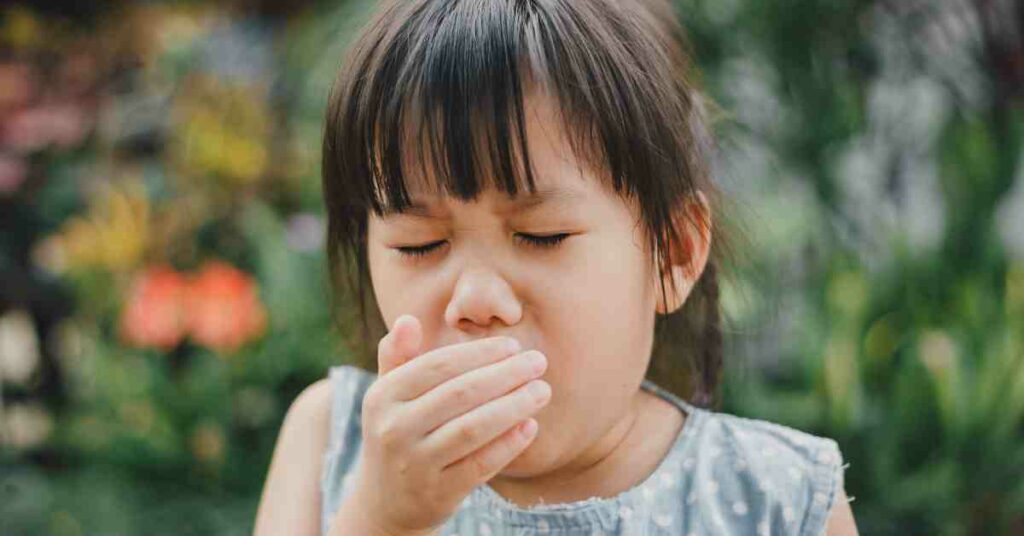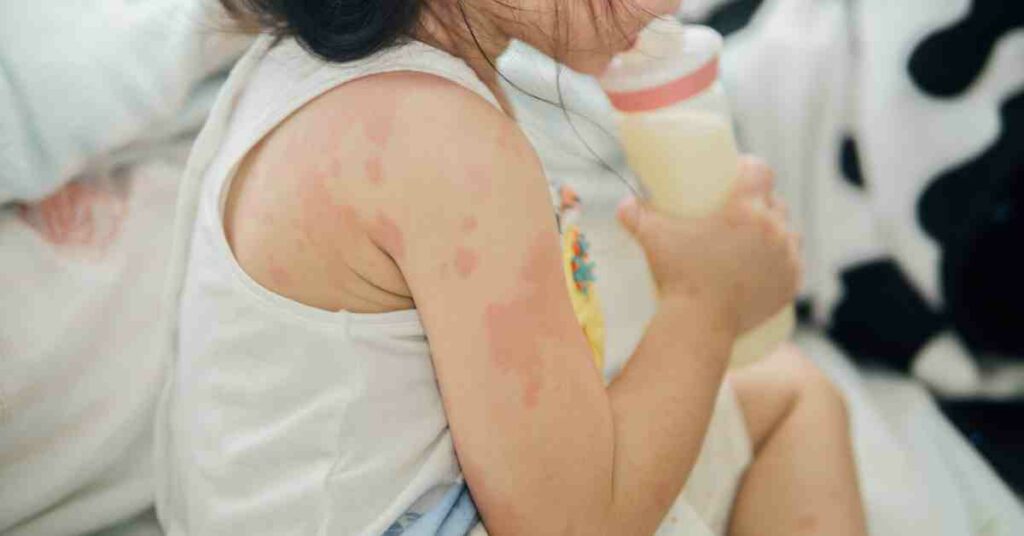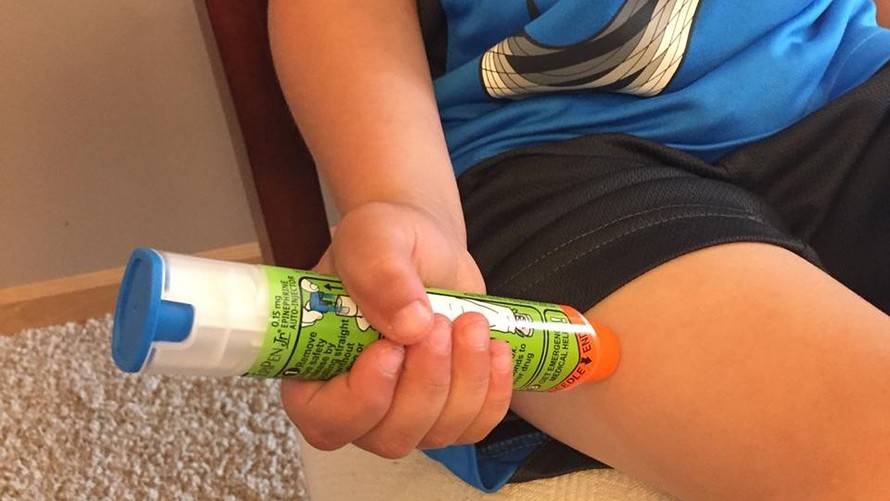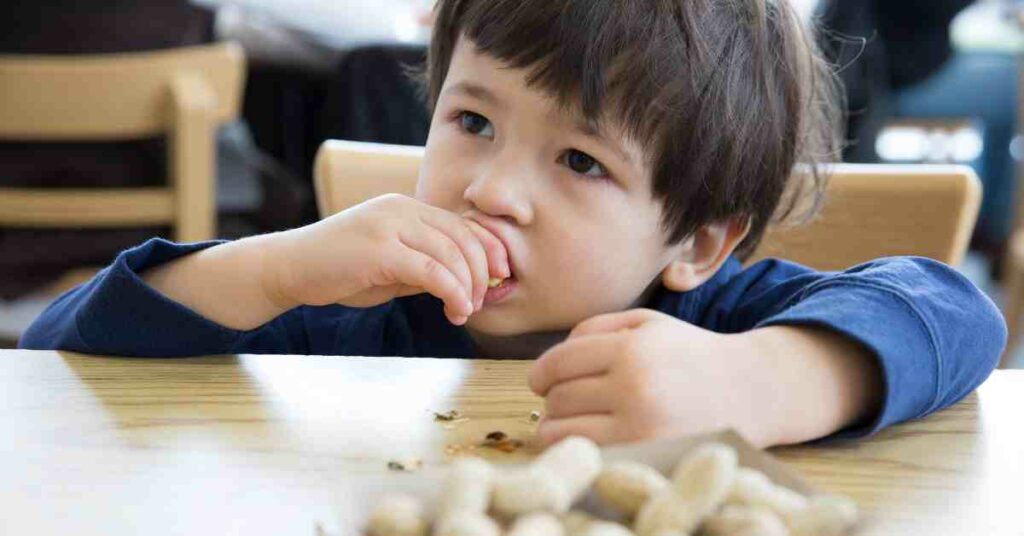Anaphylaxis in a Child – Understanding the Risks and How to Respond

Anaphylaxis in a child is a severe and life-threatening allergic reaction that requires immediate attention. It can occur suddenly after exposure to allergens such as certain foods, insect stings, or medications.
Recognising the signs of anaphylaxis early and knowing how to respond quickly can make a huge difference in keeping your child safe.
In this guide, we’ll explore the causes, symptoms, and steps you can take to manage anaphylaxis in a child, helping you feel more prepared in case of an emergency.
What is Anaphylaxis in a Child?
Anaphylaxis in a child is a severe allergic reaction that impacts various parts of the body, including the skin, breathing, digestion, and heart function. It usually happens quickly and can be life-threatening if not treated immediately.
Common triggers for anaphylaxis include foods like peanuts, tree nuts, shellfish, dairy, and eggs. Other triggers can include insect stings, certain medications, or materials like latex.
Even if a child has had a mild allergic reaction in the past, anaphylaxis can still occur suddenly and unexpectedly, making it important to be prepared.
Signs and Symptoms of Anaphylaxis in a Child

Recognising the signs of anaphylaxis in a child is essential for taking swift action. Common symptoms include:
- Difficulty breathing or wheezing
- Swelling of the face, throat, or tongue
- Hives or a rash
- Vomiting, diarrhoea, or abdominal pain
- Dizziness or fainting
- Rapid heartbeat or weak pulse
If you observe any of these signs of anaphylaxis in a child, it’s important to act immediately.
How to Respond to Anaphylaxis in a Child

When a child is experiencing anaphylaxis, the most important thing to do is use an adrenaline auto-injector (such as an EpiPen) if you have one. Adrenaline helps stop the allergic reaction by opening up the airways, reducing swelling, and making breathing easier. Administer the auto-injector as instructed, pressing it firmly against the outer thigh for about 3 seconds. It can be injected through clothing if necessary.
Once you have given the adrenaline, you must call emergency (000) immediately, even if your child starts to feel better. This is because anaphylaxis can sometimes return after the initial symptoms subside, which is called biphasic anaphylaxis. Medical experts will need to monitor your child to ensure they don’t experience a second wave of symptoms.
While waiting for the ambulance, try to keep your child calm and lying down. If they are having trouble breathing, it’s okay to let them sit upright, but don’t let them walk around. Staying still helps their body manage the reaction better.
Preventing Anaphylaxis in a Child

To prevent anaphylaxis, the best thing you can do is avoid the allergens that cause it. Always read food labels carefully, as allergens can be hidden in foods. If your child has a food allergy, be sure to inform anyone who prepares or serves them food, whether at school, daycare, or restaurants.
It’s also essential to let others know about your child’s allergies. Make sure teachers, carers, family members, and friends are aware of what triggers your child’s allergic reactions and what to do if an emergency happens. Always have an adrenaline auto-injector on hand, and check its expiry date regularly to ensure it’s ready to use. It’s a good idea to keep one at home, at school, and with your child wherever they go.
Educating your child about their allergies as they get older can also help them stay safe. Teach them how to avoid certain foods and how to tell an adult if they feel symptoms coming on.
Anaphylaxis in a child is a serious medical emergency, but with the right knowledge and preparation, it can be managed effectively. Knowing what triggers anaphylaxis, recognising early symptoms, and responding quickly can help protect your child from severe allergic reactions. It’s important to always consult your child’s healthcare provider for tailored advice on managing allergies and preventing future reactions.
Want more? We’ve got you covered…
Our Baby First Aid Courses
Our baby first aid courses are available in person in your home and online. We run classes in your home with groups of 2, 4 or up to 10 in Sydney & Melbourne and you can book in 3 easy steps!
- Pick your class
- Follow the prompts to purchase
- We will contact you within 24 hours to lock in your date of choice
Our First Aid Certificate Courses
We run most of the popular first aid courses Australia wide. HLTAID011 Provide First Aid, HLTAID009 Provide CPR, HLTAID012 Provide First Aid in an Education & Care Setting, RAMOAP (anaphylaxis), Mental Health first aid and CPR/LVR to name a few.
Book your public spot online or contact us if you have a group of 5+ people for onsite training.
Here are some other resources you may enjoy!
FREE GUIDE: Your Virtual Baby First Aid Kit
FREE GUIDE: Introducing Common Allergy Foods & Allergic Reactions
FREE Workplace Emergency Preparedness Plan: Grab this at the bottom of every page!
Follow for baby & child first aid and allergy info and tips on Instagram & TikTok, all @thenestcpr

